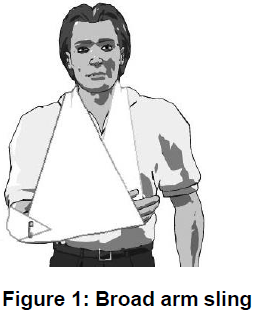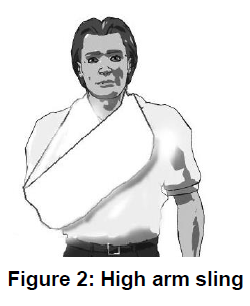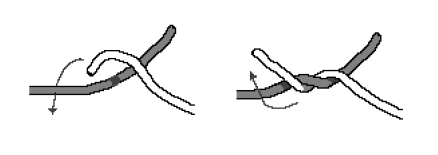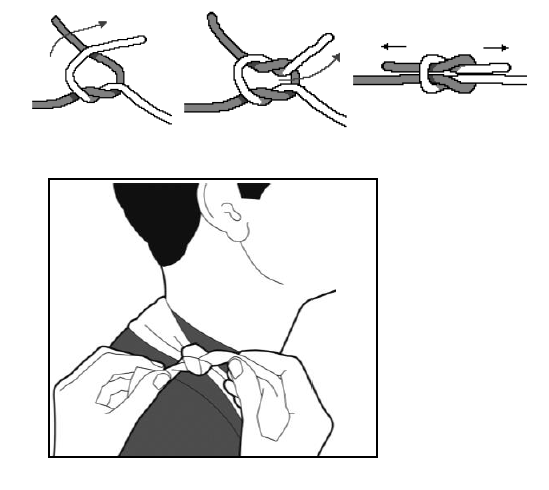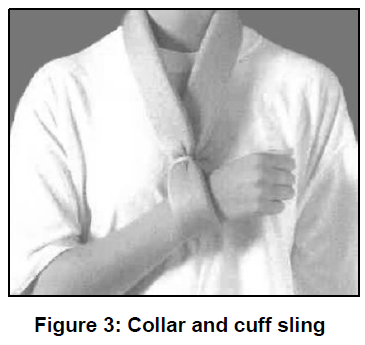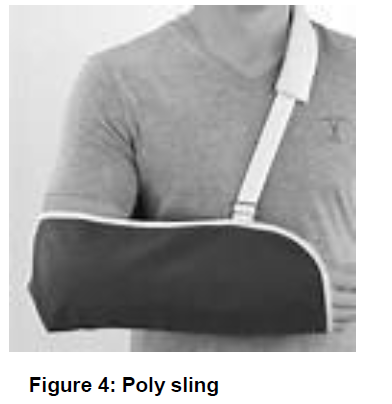Using a sling
This page gives you advice on using a sling and how it will help your recovery.
What is the purpose of using a sling?
An arm sling will protect and reduce the amount of movement of an injured arm; this will allow it to heal. A sling is important to the healing process because it supports your arm. It also acts as a sign to others to treat your arm gently.
If you have a neck or back condition, please tell the health practitioner treating you because a sling may not be recommended.
Regular pain relief such as paracetamol will help with any discomfort. Please follow the instructions in the pack.
Remove your sling several times throughout the day, unless you have been told not to. This will allow you to gently straighten your elbow and rotate your shoulder and wrist.
Do not wear your sling at night unless you have been told to so.
Your healthcare professional will advise after how many days you can stop using the sling.
Broad arm sling
This is used for arm injuries and sometimes for chest injuries. When correctly applied, the hand should be slightly higher than the elbow.
The base of the sling should lie at the root of your little finger, so that you can see your fingernails.
High arm sling
This is used to support the hand and forearm in a position to stop swelling and bleeding.
How to tie a reef knot
Always tie the ends of the sling with a reef knot. This will allow the sling to lie flat and not slip. It will also be easy for you to untie. Make sure the knot does not press onto a bone or into the skin at the back of your neck.
Method for tying a reef knot:
- Right over left and under
- Left over right and under. Pull ends to tighten.
Collar and cuff
This is a strip of foam material used to form a sling which will give extra stability of the arm. This sling is not usually removed until you have been reviewed and advised what to do.
Poly sling
Occasionally you may be supplied with a sling which is constructed from a non-stretch material with a comfortable padded lining. It has touch and close fasteners for maximum support and flexibility of use.
Additional information for those using a sling
A sling transfers the weight of your injured arm onto your upper back and neck. This can cause back and neck strain. Even if you do not have any strain at the time, you will probably notice that your sling causes the area between your shoulder to become tired and achy. You can reduce this by removing the sling at meal times and exercising your shoulder, elbow, wrist and fingers.
To reduce your risk of developing back or neck strain, it is important to keep your back straight and avoid slouching.
If you can comfortably support your arm on the chair’s armrest, you may do so.
If at any point while wearing a sling, you have severe neck or back pain, please contact NHS 111 for advice as soon as possible.
Avoid wearing a sling if you have a known neck or back complaint.
Further information
Any X-rays taken are looked at by our radiologists. If there is any concern that there may be a more serious injury, you will be contacted and asked to come in for a follow up appointment.
Contact information
Should you have any worries or concerns following discharge from hospital, please contact:
Trauma Triage
Tel: 0300 422 5269
Monday to Friday, 10:00am to 2:00pm
NHS 111
Tel: 111
